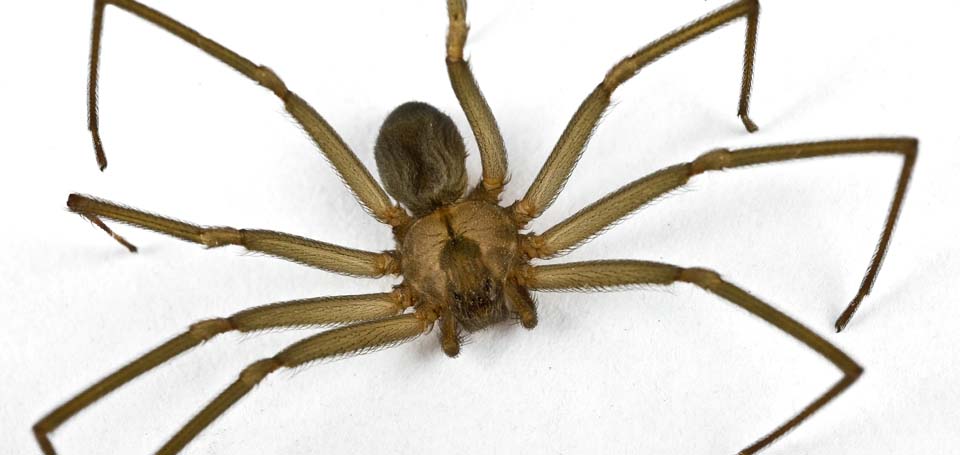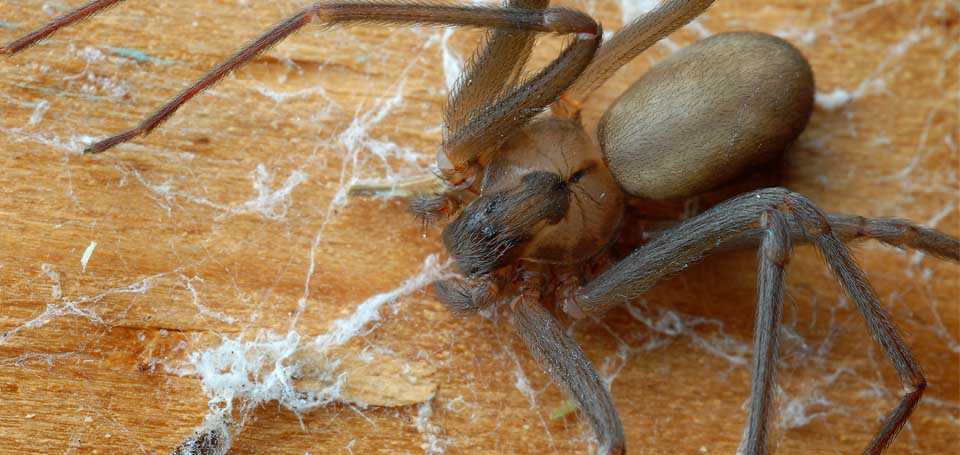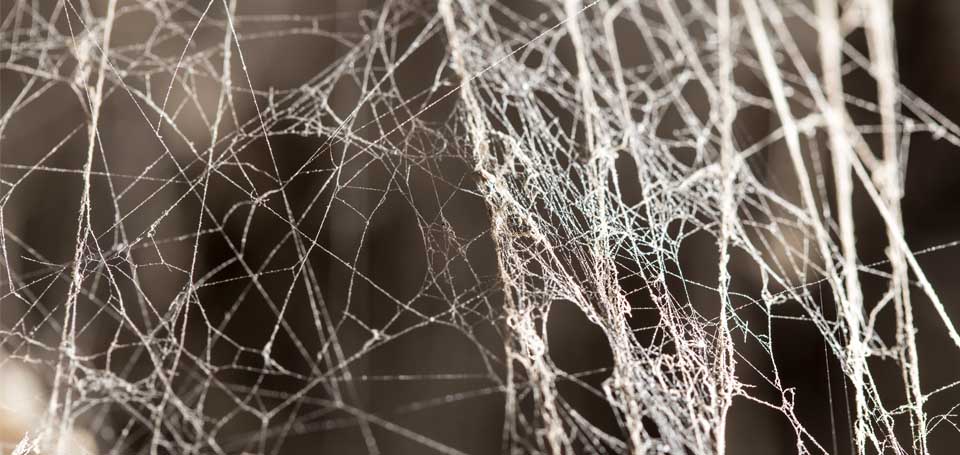Spiders are Arachnids and belong to the order Araneae. They are more closely related to scorpions, ticks & mites than they are to insects. Missouri, Kansas and Iowa are home to over 300 species of spiders, with approximately 3,400 species found in North America alone. Over 40,000 species of spiders have been identified on Earth. Spiders are found worldwide and on every continent except for Antarctica. Some are the size of a pinhead and are easily overlooked, whereas larger spiders may have a legspan of four or more inches. All spiders have eight legs, and are most easily identified by their two segmented body whereas insects have a three segmented body. A spider’s body is made up of the cephalothorax (the combination of the head and thorax) and the abdomen. There is a special gland in the spider’s abdomen which produces silk. Spiders cannot hear and instead use the tiny hairs on their legs to detect the vibrations caused by sound. Many spiders will live for only a year, but other spiders such as the tarantula can live for much longer.
Brown Recluse (Loxosceles Reclusa) (Pictured Below)Brown Recluse spiders, also known as fiddleback spiders due to the dark violin shaped marking on the broad cephalothorax (head & thorax) which is a lighter brown in color.. A dull mixture of grey, yellow and brown paints an oblong shaped abdomen. The legs of a brown recluse spider are slender and darker than the body.

Spiders are predators and will feed mainly on insects. They may also eat other arthropods, as well as other spiders. Spiders are divided into two groups: hunting (also commonly referred to as wandering) spiders, and those that build webs. Many types of spiders build webs to capture their food. A spider’s web is usually constructed in a quiet, undisturbed places. The spider will live in or nearby the web and wait for their prey to become trapped in the web. All spiders will produce silk but the hunting spiders do not use their webs to capture food. Instead, these spiders rely on speed and excellent eyesight to capture its prey. A spider’s bite is poisonous to its prey. Spiders digest their food as a liquid and will inject digestive fluids before feeding. A female spider often produces several egg sacs during her lifetime. An egg sac can contain just a few eggs where others may contain several hundred eggs. The number of eggs the sac contains is specific to the species of spider.

The majority of spiders are very beneficial to humans, as they play a role in reducing the population in a number of other pest species. There are very few species of spiders that cause serious medical risks for humans. Because of the spider’s beneficial nature and the importance of spiders to the environment, it is generally encouraged to tolerate spiders when possible. The vast majority of spiders are harmless to people, and do not see humans as a potential food source. Most spiders are shy and do not act aggressively towards humans but rather try to escape if confronted.
During the cooler months spiders need to escape the extreme cold temperatures. Most species of spiders form a heavily insulated structure for their eggs and but die off in with the freezing temperatures soon after. Everyone is familiar with seeing spiders and insects inside and around their homes. Many people discover that these instances have a tendency to become more frequent during the cooler months of the year. During the coldest months and throughout even the harshest winters, you may discover that certain species of spiders are the only pest that continues to be found in the home.
Brown Recluse (Loxosceles Reclusa) (Pictured Below) This spider’s name suits it well, as it likes to hide in areas that are rarely disturbed, such as inside drawers, closets, attics and basements. This spider can also hide behind baseboards, inside or underneath furniture. Because of their nocturnal and reclusive nature are rarely seen, but when you see one there are probably many more. Their secretiveness is helpful in a way, because their shyness and minimizes our encounters with them.
 Although there are many do-it-yourself products on the market (most of which do kill spiders) these products often prove ineffective at handling a persistent spider problem. Effective control of spiders often requires the help of a pest management professional. Alert #1 is your local pest management professional.
Although there are many do-it-yourself products on the market (most of which do kill spiders) these products often prove ineffective at handling a persistent spider problem. Effective control of spiders often requires the help of a pest management professional. Alert #1 is your local pest management professional.
The technicians at Alert #1 have many years of experience built upon the successful control spiders in and around the home and workplace. We understand the the habits of many different types of spiders in our area, and know how to provide the most appropriate and effective solution for any situation.
The most successful and long term strategies for control typically involve the precise application of baits, specific sprays and even the occasional use of insecticide dusts. The specific product to be used, or method of application will depend on several factors including knowing the species of spider to be controlled. Correct identification of the species of the spider is crucial to properly managing the pest. The professionals at Alert #1 understand that successful control of spiders occurs when we meet two basic principles: 1) locate and eliminate as many spiders as possible, and 2) identify and correct environmental conditions to make an area less attractive to future spider infestation.
 Give the professionals a call today, and let one of our friendly experts help with your spider problem. We offer a free inspection service for your home, will make the appropriate recommendations and if needed, help you by resolving the issue directly with one of our guaranteed services.
Give the professionals a call today, and let one of our friendly experts help with your spider problem. We offer a free inspection service for your home, will make the appropriate recommendations and if needed, help you by resolving the issue directly with one of our guaranteed services.



